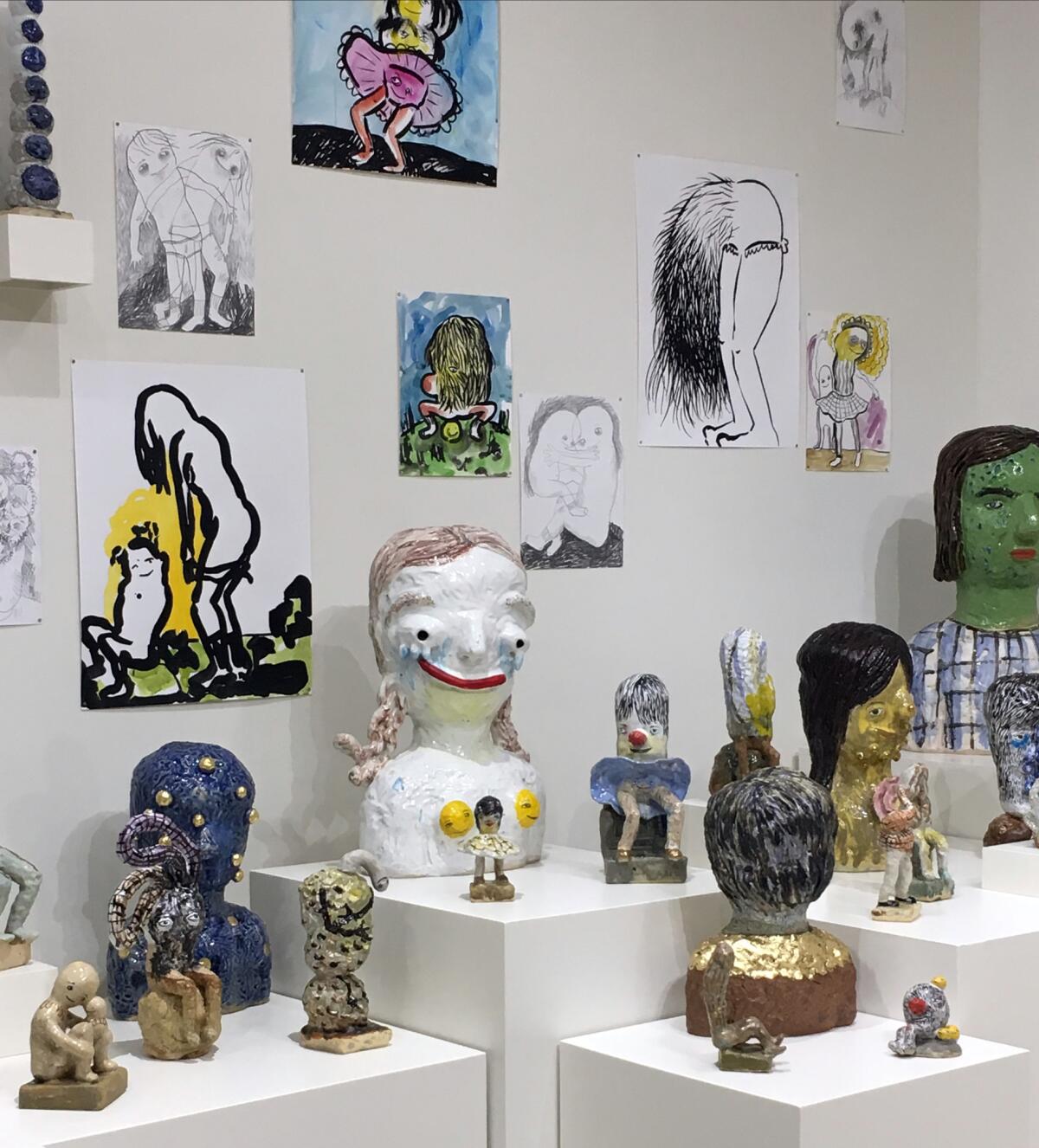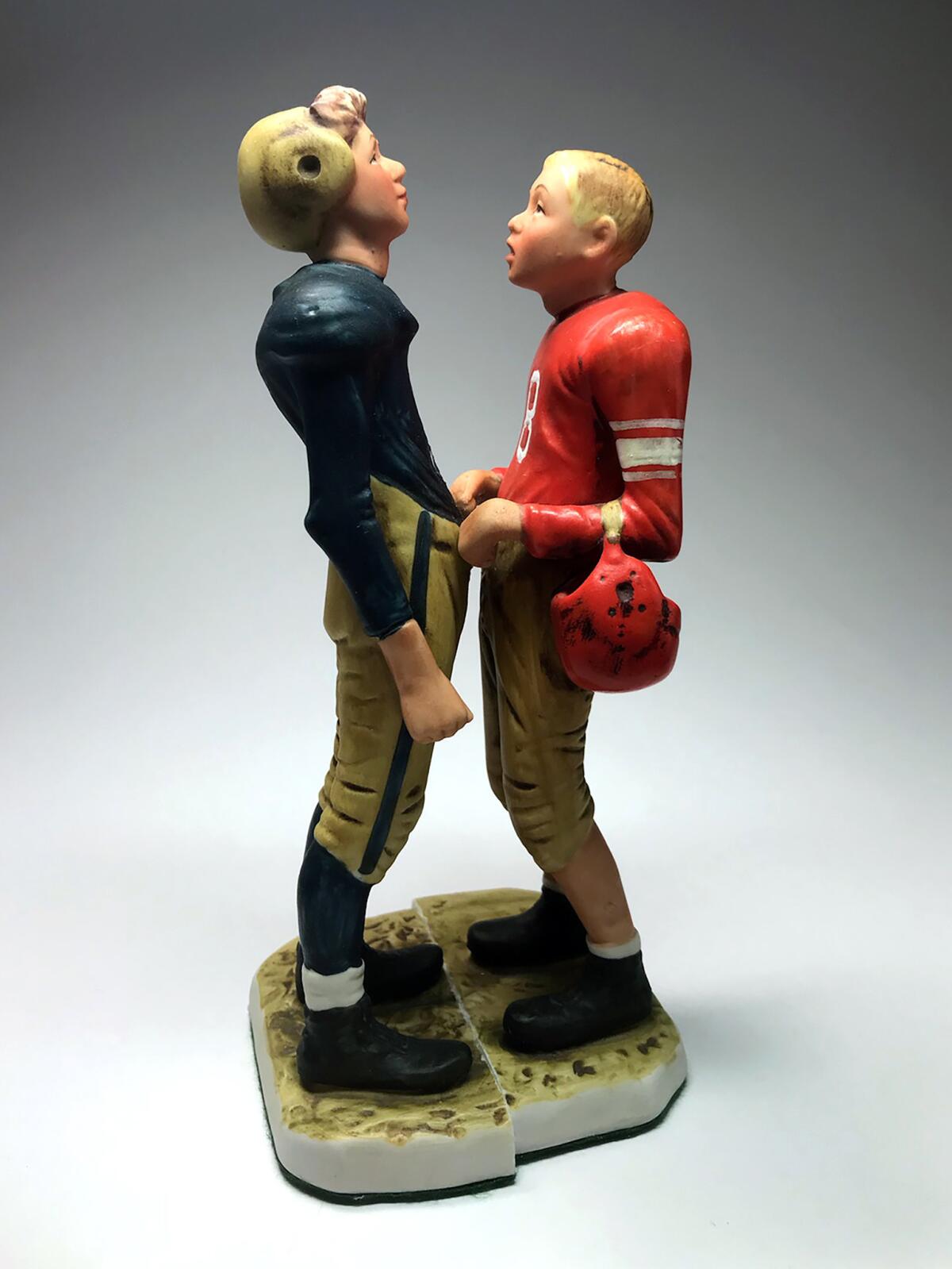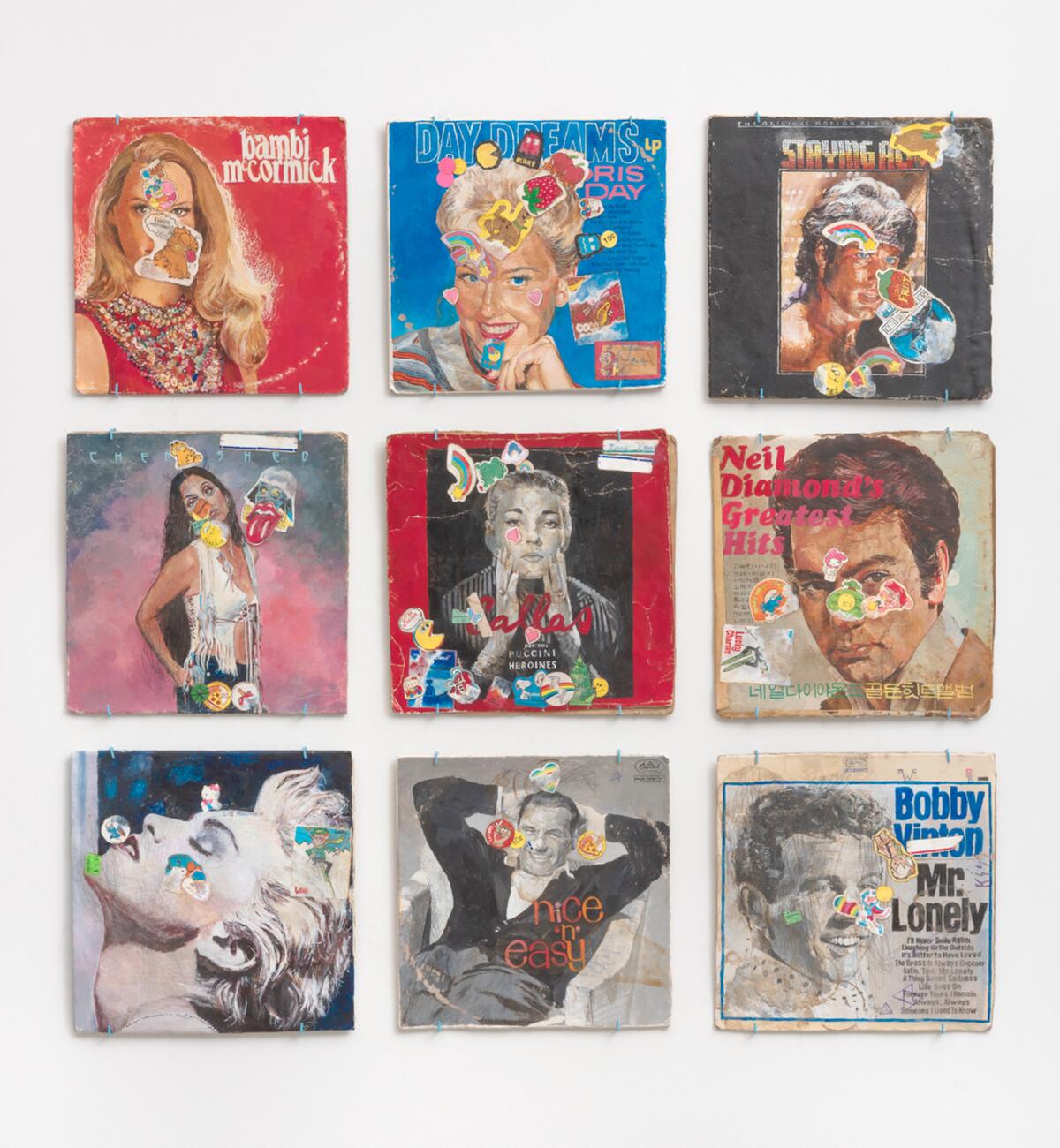Review: Humor and human clay meld in ‘The Incongruous Body’ at AMOCA
If there was any question about the connection between the material of the self — human clay — and the stuff of sculpture, Robert Arneson’s 1988 work on paper, "Head Wedged," makes the relationship clear. The ferociously funny Funkmeister renders himself in terracotta hues, scrunching his chin with one hand and reaching his opposite arm overhead to press against his temple. He's doing to himself what ceramic artists do to raw clay, knead it — wedge it — to get the air bubbles out and make the substance more pliable.
Arneson here is at once maker, matter and tool. His piece — which appears in "The Incongruous Body" at the American Museum of Ceramic Art (AMOCA) — is delightfully literal and wryly conceptual. And it’s just plain amusing, one of the most satisfying works in the 14-artist show.
Humor and the human body serve as brackets loosely containing the sculptures within. Guest-curator Tim Berg zeroes in on the notion that humor arises from the mismatch between what we know of something and how we actually perceive it. Not all here is comic, however, and not everything manages to muster heat from the rub of implicit expectation against direct experience, but the show has enough radiant moments to redeem the whole.

Kim Tucker's sweeping installation of drawings and ceramic figures, on pedestals ankle-high on up, introduces a motley array of characters — clownish, hapless, sexually skewed, abjectly disfigured and reconfigured. One has eyes for nipples, another is hairy as a yeti, but Tucker somehow invests even the scatological and grotesque with endearing appeal.
In a quietly alluring group of plates, Jeremy Brooks revels in a double-entendre, using shino glaze on found images of Shino brand men's underwear. Brooks also repurposes vintage ceramic figurines, turning the benign and decorative into retroactively daring shelf-bound scenarios of same-sex attraction.
In her "blame-game-rattle," activated through performance, Elana Mann tops a wooden handle with a spiky dandelion head of waggable clay fingers.
Future Retrieval, a collaborative, presents an enigmatic trio of objects that invoke ancient relics but also up-to-the-minute products of a 3-D printer, conflating authenticity and artifice.
Yoshitomo Nara fills three long, time-worn tables with an assembly of mostly gourd-shaped vessels, which are buoyant in design and graphically punchy. They reference, in images and text, a spectrum of emotions, from optimistic declarations of world peace to confessions of despairing isolation.

In three multi-part works, Kristen Morgin constructs humble shrines to pop culture personalities that also pay wistful homage to a younger self. Her extraordinary evocations, in painted unfired clay, include record albums streaked with pencil and bedecked with stickers, paperbacks water-stained and library-stamped, cunningly misdirect us through trompe l'oeil illusionism. But they also aim our eyes and senses right to the raw center of lived life, where no boundaries separate the cheap from the cherished.
Also included in “The Incongruous Body" are works by Molly Anne Bishop, Pattie Chalmers, Viola Frey, Alessandro Gallo, Taehoon Kim, Beth Lo and Matt Wedel.
AMOCA, 399 N. Garey Ave., Pomona, Through Jan. 20; closed Mondays and Tuesdays. (909) 865-3146, www.amoca.org.

The biggest entertainment stories
Get our big stories about Hollywood, film, television, music, arts, culture and more right in your inbox as soon as they publish.
You may occasionally receive promotional content from the Los Angeles Times.







